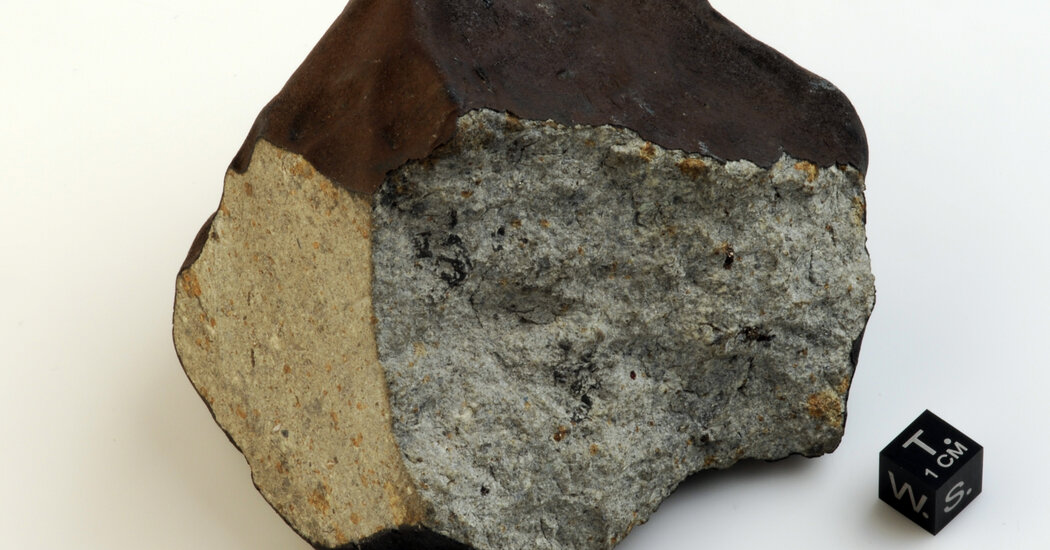By: Felix Xie
An Austrian forest ranger discovered an odd rock in 1976. Several decades later, scientists are now able to link the rock’s origin to a meteorite. Digging through some old photos, Planetary Scientist Maria Gritsevich was able to link the rock to a meteor.
By Felix Xie
Of the tens of thousands of asteroids that have hit Earth, only a handful have been identified. Sure, we know that these interstellar rocks come from space, but we don’t know where exactly they come from. Nor at what angle they hit Earth. Nor what their velocity was. Nor what their composition was.
However, new data has allowed scientists to answer all of their curiosities about this rock. The rock in question was discovered in the Austrian Alps decades ago by a forest ranger, Josef Pfefferle. Scientists have determined that the rock came from a meteorite that caused bright flashes of light when it came into contact with our atmosphere. Linking the rock, or meteorite, to its parent meteor is a rare victory for scientists. With these results, scientists may have a new reason to reinspect old data sets. The findings were published in the journal Meteoritics & Planetary Science.
A strange-looking rock caught the attention of forest ranger Mr. Pfefferle in 1976 while he was removing the debris from an avalanche close to the Austrian village of Ischgl. He carried the black stone, the size of a fist, back to his house and placed it in a box.
Years later, when Mr. Pfefferle heard a news story that an asteroid had been discovered, he wondered if his rock was also an asteroid. Mr. Pfefferle’s find did turn out to be a meteorite and, at over two pounds, a relatively large one.
Its fresh exterior showed that the meteorite had been discovered quickly after falling to Earth’s surface. “It was such a fresh meteorite,” said Dr. Gritsevich, a planetary scientist at the University of Helsinki in Finland who led the recent study. “It was so well preserved,” she continued.
Dr. Gritsevich and her colleagues conjectured that the Ischgl meteorite had fallen to Earth, was discovered soon after it fell, and therefore, it might have been captured on film. Germany’s network of 25 sky-viewing cameras located across southern Germany might have captured long-exposure images of the meteorite.
“It was most logical to track it back to the most recent fireball seen in the area,” Dr. Gritsevich said.
Dr. Gritsevich and her team sifted through images of fireball-containing images that were captured by the cameras in the German Aerospace Center in Augsburg, Germany. After digitizing the images, they were able to estimate the mass, shape, velocity, angle of entry, etc. of the meteors. Using this data, the researchers selected a dozen events that could have procured the meteorite. There were only three before 1976.
Using the data, the team reverse engineered the trajectory of the meteors, and calculated where the meteors would most likely be found. Only one match appeared for the Ischgl meteorite. The team concluded that the fireball that arced low across the horizon in the early morning hours of Nov. 24, 1970, birthed the Ischgl meteorite.
“This one matched exactly,” Dr. Gritsevich said.
She calculated that the incoming meteor fell to Earth at a speed of roughly 45,000 miles per hour. That’s fast but well within the range of meteoroids born in the solar system, Dr. Gritsevich said. Something that came from beyond the solar system, on the other hand, would have been traveling much faster, she added.
They estimated that the meteorite that produced the 1970 fireball once orbited the sun close to the Earth. It probably didn’t come from the main asteroid belt between Mars and Jupiter, which is the source of many meteoroids, Dr. Gritsevich said.
Linking a meteorite to where it was born is important, said Marc Fries, a planetary scientist at NASA Johnson Space Center in Houston. “It goes from being just a rock you find on the ground to a rock that comes from a specific place in the solar system,” he said. Roughly 50 meteorites have had their orbits determined; Ischgl is the third-oldest among them.
Peter Brown, a scientist who was not directly involved, said that there’s a neat story here: “It’s great to show that there’s value to this older data.”











